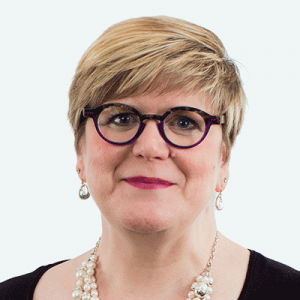 Juliet Holt Klinger, MA
Juliet Holt Klinger, MA
Senior Director Dementia Care, Brookdale Senior Living
We are all in this together and whether we work in skilled nursing, assisted living, home care, or are care partnering with a loved one in our own home, we have to get this right. For a long time there has been a false notion that the only origin for a culture change journey was a nursing home–not so.
We in the assisted living world are on a journey too; it’s just that our journey at times seems to be in reverse. The assisted living model started out as a very person centered concept—a trailblazer in the world of long term care. Credit for developing the model is almost always given to Dr. Keren Brown Wilson who owned and operated of the first assisted living project in Oregon in the early 1980s.
Assisted living was originally designed as an alternative to the stiffly regulated medical model of nursing homes and in fact were often placed in direct opposition as if one could replace the other. Remember social model vs. medical model? Well it is no longer such an easy binary picture. Over the years, assisted living has really morphed into something else, something harder to define. Many providers, large and small, have left the limiting hospitality-focused social model behind out of necessity and have embraced a more integrated model that better meets the needs and demands of a new generation of aging customers who want a different and better kind of care setting.
We are proud now, after almost 40 years of existence, of our ability to provide for the high acuity needs of our residents—in many cases the same level of acuity and frailty once thought of as only appropriate for nursing home care. Most assisted living providers have well-developed nursing care systems and processes and are in some cases managing residents with highly complex needs. In some cases.
That’s the thing, assisted living does not have one set of defined services or more importantly one set of regulations—what is offered varies greatly by provider and regulations vary differently in every state. Unlike our nursing home cousins, we have been freely able to bend and weave many person centered approaches into the fabric of our communities. Most assisted living communities have always had predominately private rooms furnished by our residents, more residential environments and décor, ready access to outdoor spaces, softer lighting, non-institutional uniforms for associates, live-in pets roaming the halls, and choice in dining times and menus (no liberalization required).
The question is, can we hang on to it?
In their recent publication, 2017 Assisted Living State Regulatory Review, NCAL (National Center for Assisted Living) found that:
”In the last year, 17 states made changes to licensing conditions, oversight requirements, and a variety of other regulations affecting assisted living. Four states saw new laws around penalties and oversights. While 33 states reported no legislative or regulatory changes affecting assisted living communities this year, more than half of the states will be “proposing, formally reviewing, or considering changes over the next year.” (https://www.ahcancal.org/ncal/advocacy/regs/Documents/2017_reg_review.pdf)
The increasing challenge for assisted living will be to hold onto its person centered roots in the face of increased regulation and oversight—hence the reverse journey. The trick will be for us to continue to partner with legislators and regulators to move forward in a way that is both person centered and well-monitored. I personally believe that increasingly there will need to be a stronger partnership between us in assisted living and those nursing home culture change pioneers who have gone before us to learn the valuable lessons of their experience. We need to preserve and improve on the original intent of the assisted living model as we care partner with a new generation of residents, increasingly complex, but no less deserving of a person centered approach.


